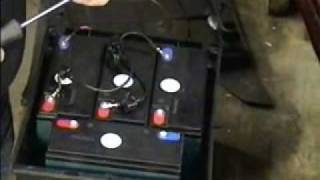Wednesday, 24 December, 2025г.
















Где искать: по сайтам Запорожской области, статьи, видео ролики
пример: покупка автомобиля в Запорожье
Polarisation or Electric Polarisation | Physics4students
A nonpolar molecule is one in which the centre of gravity of the positive charges (protons) coincide with the centre of gravity of the negative charges (electrons). Example: O2, N2, H2. The nonpolar molecules do not have a permanent dipole moment. If a non polar dielectric is placed in an electric field, the centre of charges get
displaced. The molecules are then said to be polarized and are called induced dipoles. They acquire induced dipole moment p in the direction of electric field.
A polar molecule is one in which the centre of gravity of the positive charges is separated from the centre of gravity of the negative charges by a finite distance. Examples : N2O, H2O, HCL, NH3. They have a permanent dipole moment. In the absence of an external field, the dipole moments of polar molecules orient themselves in
random directions. Hence no net dipole moment is observed in the dielectric. When an electric field is applied, the dipoles orient themselves in the direction of electric field. Hence a net dipole moment is produced.
The alignment of the dipole moments of the permanent or induced dipoles in the direction of applied electric field is called polarisation or electric polarisation.
Теги:
Polarisation Electric Polarisation Physics4students Explain polarization Explain Electric Polarization
Похожие видео
Мой аккаунт


 У вашего броузера проблема в совместимости с HTML5
У вашего броузера проблема в совместимости с HTML5


